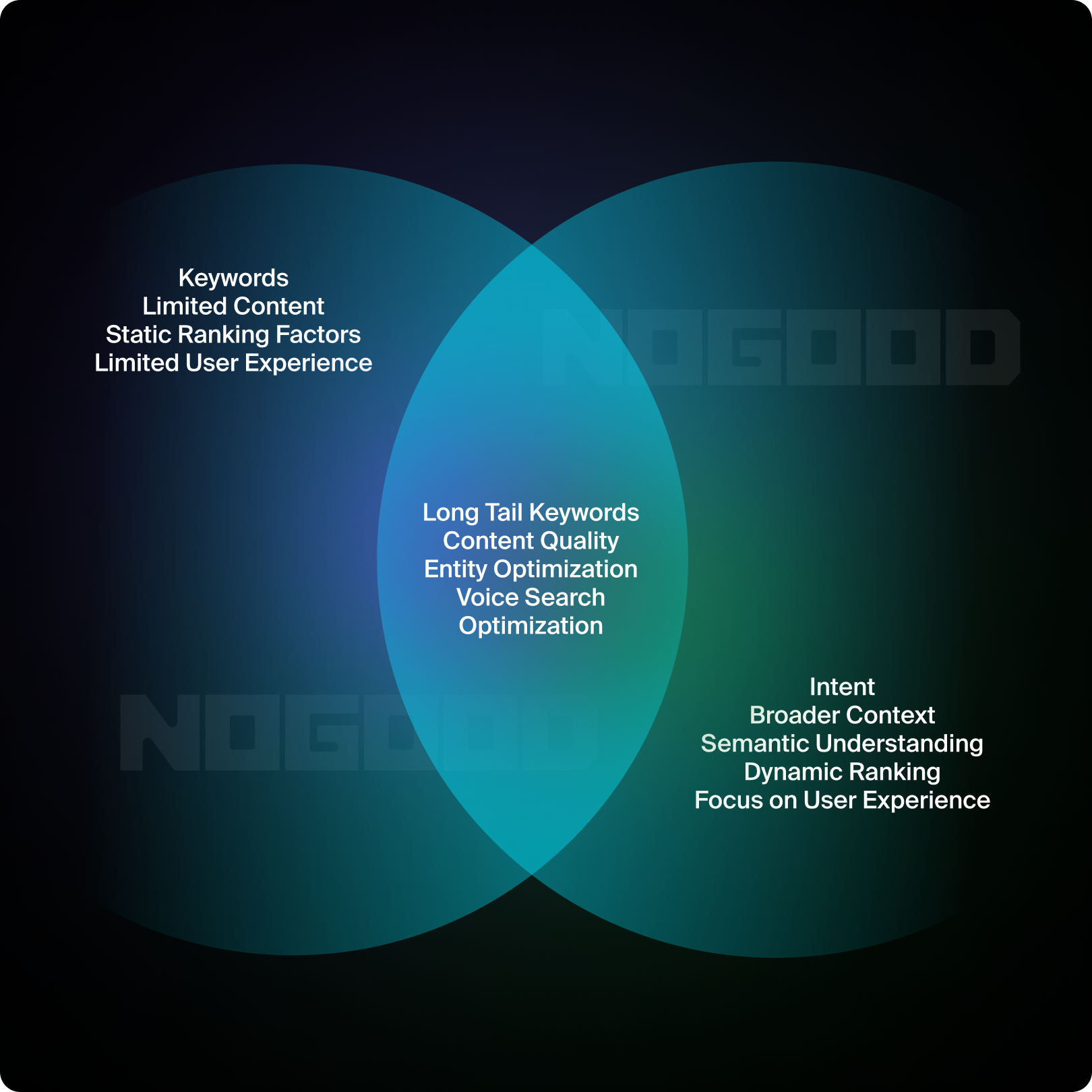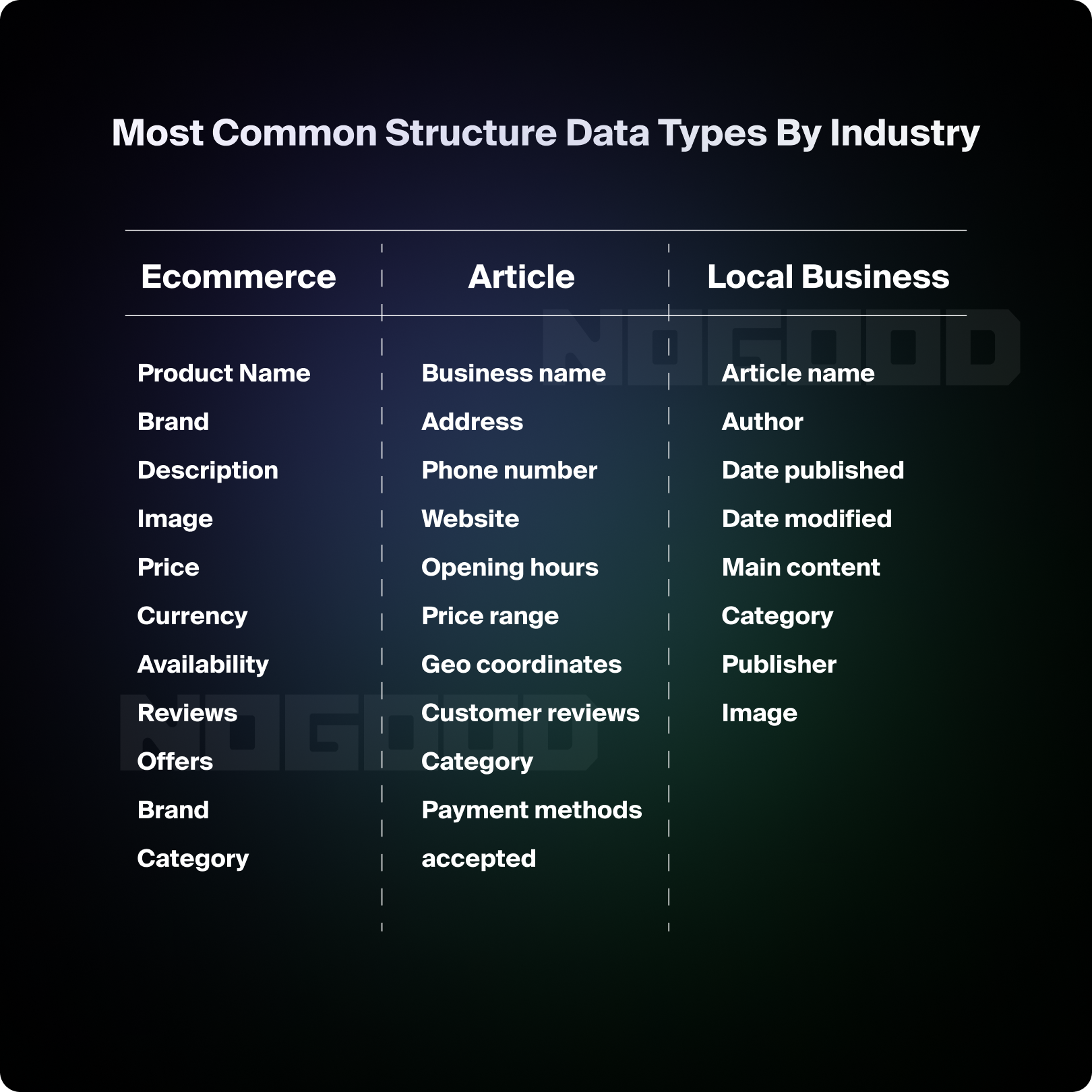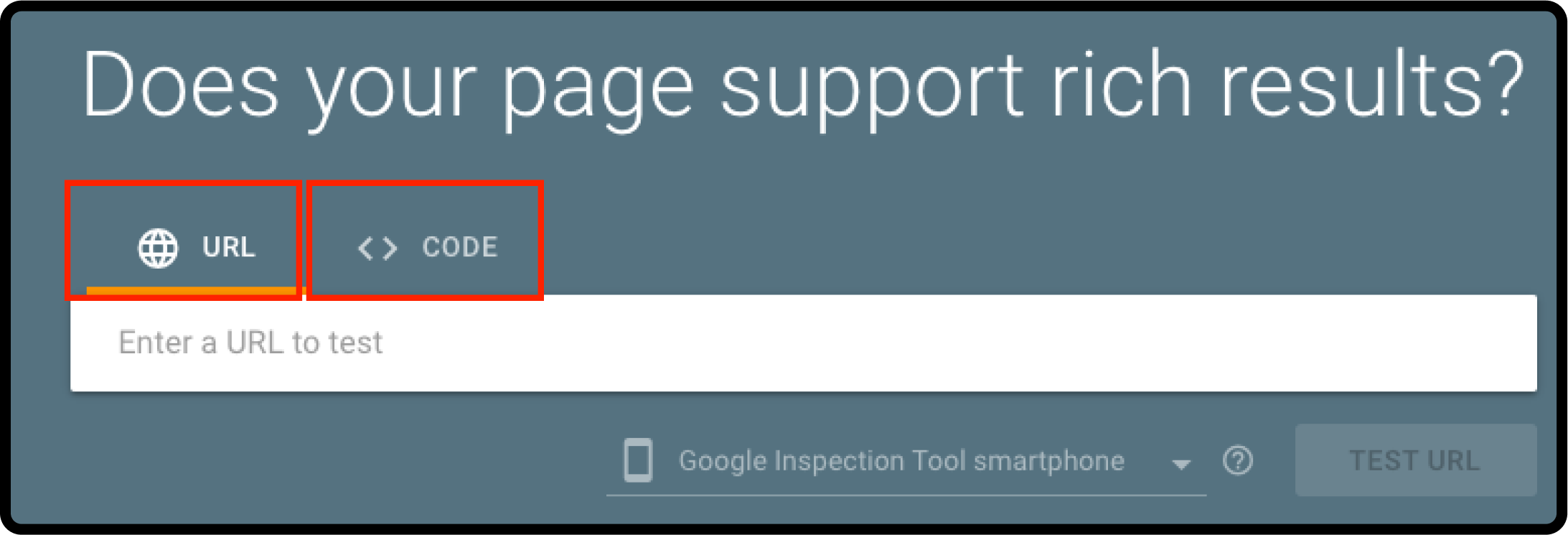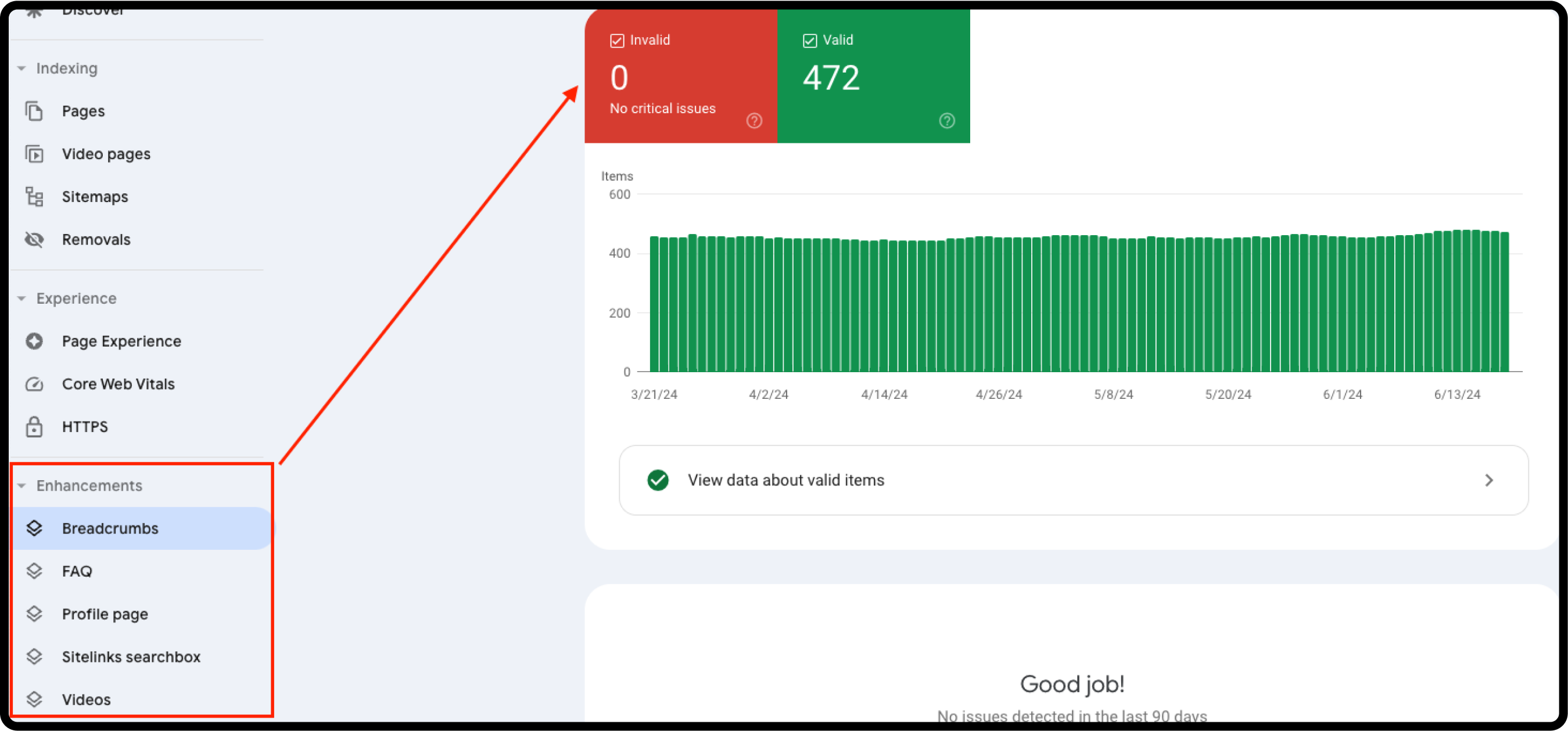Structured data is no longer a nice to have when it comes to SEO and digital marketing. The release of AI search summaries from Google sends a clear message to marketers that content organization is a must. Many webmasters have seen organic traffic decline after Google’s most recent rollout of generative search, and the push for structured data has never been stronger. If you’re late to the party, it’s about time you jumped onto the structured data train.
Structured data bridges the gap between AI’s thirst for knowledge and understanding and matches it to the user intent. While AI is the main reason the game is shifting when it comes to search, structured data remains the best way to mitigate risk for declines in traffic. Providing clear and succinct pieces of information that Google and other AI’s can quickly scope up and repurposes in answer summaries will be the new battleground for SEOs and marketers everywhere.
Don’t fight the AI search battle alone; talk to our team of Search Experts!
AI Search vs Traditional Search: Why Structured Data is Changing
Yes, we know that AI search summaries have taken the SEO community by storm recently, and theories, advice, and new best practices have been thrown around in the last few months, but what is actually changing? Before AI summaries, traditional search focused on strategically placing keywords throughout a website – obviously.
AI search, search summaries, and rich results are now held in high regard and with AI search taking up more real estate on the SERP, it’s no wonder SEOs and marketers are doing whatever they can to get into these listings and coveted sections of search.

Keywords → Intent
While traditional search was primarily focused on keyword targeting to judge ranking, Google has shifted their focus to prioritizing user intent. Due to the conversational nature of AI and search summaries, how a user feels and engages with content is more important than ranking highly.
This means that it’s not just about the content found on your pages, it’s about the order in which a user engages with it. Thinking about the user and understanding what information they need to know first is important. Write for the user, not for the search engine.
Keyword Density → Informative Content:
Primary, secondary, and tertiary (semantically related keywords) are all things we as SEOs have heard a million times. SEO content scorecards and search engine manipulation are a thing of the past. While some may look at this as a downside, this ultimately levels the SEO playing field. Traditional search always had a special place for quality content, website authority and backlinking played a much bigger role for ranking.
Have you noticed all the reddit posts ranked highly in search? If you’re an SEO how could you not! Yes, this may seem a little one sided but the truth may lie in the type of content Reddit is producing. If first-hand accounts and user forums are being held in high regard by Google, what does that mean for your content?
Content Types that Convey First-Hand Accounts:
- Case Studies
- User-Generated Content (UGC)
- Data Visualization and Infographics
- Interviews with Experts or Industry Leaders
- Q&A Sessions
- Customer Stories
- Behind-The-Scenes Content
Specific Narrow Targeting → Long-Tail Keywords
With the introduction of AI in search, Google can now grasp more of the nuances of natural language. This has made long-tail keyword targeting a hot topic in the SEO community, as many of these types of keywords trigger an automatic search summary feature. SEOs have to get comfortable with less organic traffic, which is being siphoned off by search features more and more.
Long tail keyword targeting allows you to target generally less competitive keywords (for now) that are arguably higher intent and should convert more anonymous users into leads for your business. Most long-tail keywords are question based and can be open-ended, this puts even more pressure on marketers to properly structure their information with clear and concise data.
Authority → User Experience
Authority scores and backlinks are not necessarily a thing of the past, but they have taken a new meaning in the age of AI search summaries. Even though the phrase is worn out, content is truly kind with AI. Google and other search engines are more focused than ever on user experience and engagement metrics.
We as marketers have to move beyond the surface level metrics we get from GA4 and other reporting platforms. We need to be focused and think about how we are using our content to engage the users. This goes beyond the structure of your content, which is vitally important, but we also need to be implicit with the words and phrases we use to convey our ideas.
The Role of Structured Data in Search Advancement
Structured data, or schema markup, is the translator between your content and search engine. These libraries of information create standard formats to clearly serve information from your webpage to searchers everywhere.
- Improved Ranking Potential: Search engines like Google have an easier time matching up your content to searches when the information is clear and in a format they are already familiar with.
- Richer Search Results: Structured data makes web pages eligible to display in rich snippets found on the search engine results page (SERP). These snippets include extra details like ratings, events, or product prices, making your listing stand out from the crowd and attracting more clicks.
- Enhanced User Experience: Structured data helps search engines provide more relevant and informative results to users.
Search advancement can mean a lot of things. For ecommerce sites, search advancement is improved product listings with more filters to prequalify searchers before they even get to their site. For Local businesses, this means better visibility for events and location information. Blog content will have improved author, publication dates, and article type information playing right into the need for improved E-E-A-T metrics.
Advancement can be different for everybody but the competition is just starting. Taking advantage and refining your information early will give you the best fighting chance as more and more businesses follow suit.
The Future of Search: Deeper Understanding, Higher Ranking, New Skill Sets
The future of search belongs to those who strive for deep understanding of a topic and concise information delivery. The search arena is bound to become much more interactive and conversational than ever before. Interaction is exactly what Google is looking for and using as a ranking factor for content across the web. Why wouldn’t they use this for their own search results?
The Three Inevitable Search Changes
Interactive Search Results: Structured data is already paving the way for interactive search results. Pretend you’re searching for a product and you’re able to see current inventory and book appointments directly from search. The depth of interactivity is only limited by the adoption rate of structured data elements. Google is reducing clicks by trying to incorporate actionable steps on the results page. While this may be a negative for everyone’s organic traffic, it’s a big win for user intent.
Voice Search Optimization: The explosion of voice search has placed even more emphasis on the role of structured data. Conversational elements of your content can be served and referenced in voice searches and as this progresses, voice searches will become a bigger part of everyone’s SEO play. Google has even released a beta version of Speakable structured data so be sure to stay updated on that.
Google Knowledge Graph Integration: Google is building large amounts of knowledge graphs that connect entities and information across the web. You may have seen some traffic declines for certain keywords that now reference a knowledge graph at the top of search results. While this can drive down click-throughs to your site, those who make it into these coveted spots are sure to see traffic funneled to their results.
Actionable Steps for Marketers & SEOs
Structured data can be difficult to wrap your head around but breaking things down step by step will provide a clear path forward to improved SEO. The best way to start out is to identify your goals and content steps and from there you’ll be able to decide which schema is needed.
1. Identify Your Goals & Content Types
Depending on the type of site and business you’re hoping to promote, your goals are likely very different. For example, if I ran a local business and my goal was to get more people to my events that I host in town, I might consider the pages I already have on my site and if I needed to create any additional pages to conform to the needs of event focused structured data.
Ask yourself the following questions:
- What area of SEO or my site am I trying to improve with structured data?
- Which user action/engagement am I hoping to improve?
- Are there any specific search results or keywords I want to target?
- What types of content on my site can benefit from structured data?
- Which area of the site has the highest growth potential?
2. Choose The Right Structured Data
For anyone looking to implement schema on their site, schema.org is the clear source of truth for any implementation. This site offers a massive library of options for a variety of content types and structured data options. Use this site to explore what options are available for your specific business type.

3. Implement Structured Data
Structured data implementation can be done in a few different ways depending on where your site is located and if you already have a preferred method. If you’re unsure which option is best for you, discuss it with your developer so they can provide their input so you can move forward with the best possible solution. Here are a few different options for implementing structured data:
- Manual Coding – If you like to code directly on your site, you can absolutely add schema markup directly to your web pages using specific tags and attributes.
- Plugins – CMS like WordPress offer plugins that simplify the structured data process. For this type of implementation it is critical to check the format and ensure the schema is properly coded. Schema is changing all the time so make sure your plugins are compliant.
- Data Feed Manager (Ecommerce) – Websites with product feeds and large categories of options may utilize custom solutions for implementing structured data. This type of widespread implementation is in need of constant updating as product information and schema compliance changes.
4. Test & Validate
Implementation is one thing, but making sure it’s working properly is another. Depending on your journey to structured data, you may already have a good understanding of coding and its principles. If you’re like me and had to ride the struggle bus all the way to coding land, structured data can take more time to get a grasp on. Before sending any new code live, you’ll want to make sure it’s properly formatted and accepted by Google.

You can validate your code using Google’s Rich Results tester. You can test the code by pasting in the URL of the page or by pasting in the code you’re hoping to deploy.
5. Track & Measure
Any good test is centered around measurement. Understanding if the effort is worth the return is more valuable than the return itself. Knowing that something has an impact gives you a real lever to pull when you’re looking to get more meat off the SEO bone.
Implementing structured data should have an impact on both traffic and CTR. CTR is a better metric to focus on as the whole goal is to communicate value prior to the click. If you see an increase in CTR, you can bet that structured data is having an influence on it.

Use Google Search Console to keep track of the different types of enhancements you place on your site and ensure there aren’t any invalid elements that need to be altered.
The Power of Clarity
Structured data provides clarity, and clarity provides efficiency. Google strives for efficient search results, getting users to their goals or alleviating their pain as soon as possible. The push for structured data and its clear relationship with AI search advancements is creating change in the world of SEO and marketing. SEOs now have to bring a new skill set to the table as structured data becomes a necessity.
If you want to take your business to the next level and future proof your SEO, implementing and maintaining your structured data will give you the competitive edge you’re looking for. If you want to understand the potential impact of these tactics, talk with one of our experts today and start winning tomorrow!







